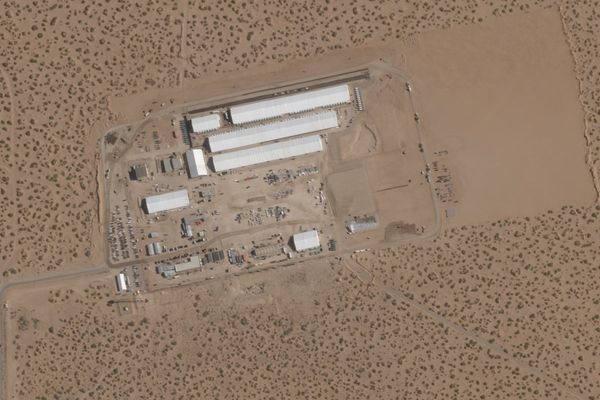It was 1920. King George V was on the English throne as Jakobus Hendrik de Wet carefully planted his vines of Muscat d’Alexandrie in South Africa’s Breedekloof valley. In 1936, US President Franklin D. Roosevelt was elected for a second term when the “La Colline” semillon vineyard was laid out on the outskirts of Franschhoek. In 1964, as the Rolling Stones dropped their debut album, farmers Basie van Lill and Joshua Visser were planting chenin blanc on a lonely mountain called Skurfberg.
These roots are still producing grapes, and it’s this rich viticultural heritage that South Africa’s Old Vine Project (OVP) is working to protect, by celebrating the quality and complexity of the wines made from them.
Viticulturist Rosa Kruger started the OVP in 2002 when she began searching for legacy vineyards in South Africa’s Western Cape winelands, scribbling her finds in a battered notebook in between her consulting work. In 2016, Johann Rupert, the billionaire chairman of Swiss-based conglomerate Richemont and owner of Franschhoek wine estate L’Ormarins, agreed to provide seed funding. It proved a tipping point.
“Since then we’ve created an entirely new category of South African wine,” says OVP project director André Morgenthal, referring to the “Certified Heritage” seal applied to wines made from vines more than 35 years old. “We simply want to help South African winemakers make better wine by working to keep these old vines in the ground.”
As the size of South Africa’s vineyards has fallen steadily over the past decade while farmers replant them with lucrative fruit orchards, the proportion of old vines has risen 45%—to 10,605 acres in 2022. It helps that farmers increasingly see the value of keeping the vines: The OVP has grown from eight member vineyards in 2017 to 135 fee-paying winemakers and producers in 2022. It’s also created a trading platform, matching winemakers looking for old vines with farmers seeking a market for their fruit.
“There is a depth and power and concentration [to the grapes] that younger vineyard blocks simply don’t have,” says Alex Starey, winemaker at Stellenbosch estate Keermont Vineyards. “These old vineyards have both strong and weak vines, and that brings complexity.” Adds Alastair Rimmer, cellar master and chief executive officer at DeMorgenzon Estate: “Old vines have an intensity. There’s a textural density, a viscosity.”
That quality comes at a cost: volume. “Old vineyards deliver about 40% of the yield” of younger vines, says Ken Forrester, owner of Ken Forrester Vineyards, “but with 100% of the cost. So you’ve got to be charging a premium on the bottle for it to make financial sense.”
Detailed planting records kept by the South African Wine Industry Information and Systems (SAWIS) allow the OVP to affirm when each vineyard was planted. Members can use the Certified Heritage seal, offering proof of provenance.
“It does help sales,” says Greg Sherwood MW, the fine wine director at London wine merchant Museum Wines. “It’s that extra knowledge and information they crave when spending £40 or £50 ($63) on a bottle of wine.”
“It leans into that cachet of maturity of wine, without the need for cellaring,” notes Jeremy Fowler, sommelier and the US head of wine for restaurant brand Zuma. “I think it has real power for consumers. It gets them into that pantheon of age right from the purchase of the bottle.”
For South African producers, it’s a boon for their wines’ profile and price point more broadly. “The OVP is helping to lift the brand value of all South African wines,” Rimmer says. “By promoting the old vine category we pull the whole South African wine industry along.”
How Are Old Vines Determined?
Designations vary globally. For South African vines, Kruger settled on 35 years, a long time to survive in the harsh climate.
In Australia’s Barossa Valley, the Old Vine Charter sets a similar threshold, but also denotes “Survivor” vines (older than 70), “Centenarian” (100) and “Ancestor” (beyond 125 years).
In Chile’s Maule Valley, the “Vigno” label, short for Vignadores de Carignan, is reserved for carignan made from vines at least 30 years old.
France, for all its other regulations, has no rules around what constitutes “Vieilles Vignes.”
Sip these South African Old Vine wines …
Alheit Cartology 2021A blend of chenin blanc and semillon from vines 35 to 50 years old. $52; cape-ardor.com
Ken Forrester Vineyards FMC 2021An iconic Stellenbosch chenin blanc from vineyards planted in 1970 and 1972. $65; amsterdamwine.com
Naudé Old Vines Cinsault 2015Planted in 1978, this parcel is one of few old cinsault vineyards still in the ground. £50/$63; museumwines.co.uk
Mullineux Syrah 2019A memorable expression of both old vines and the diverse soils of the Swartland region. $44; cape-ardor.com
©2023 Bloomberg L.P.







